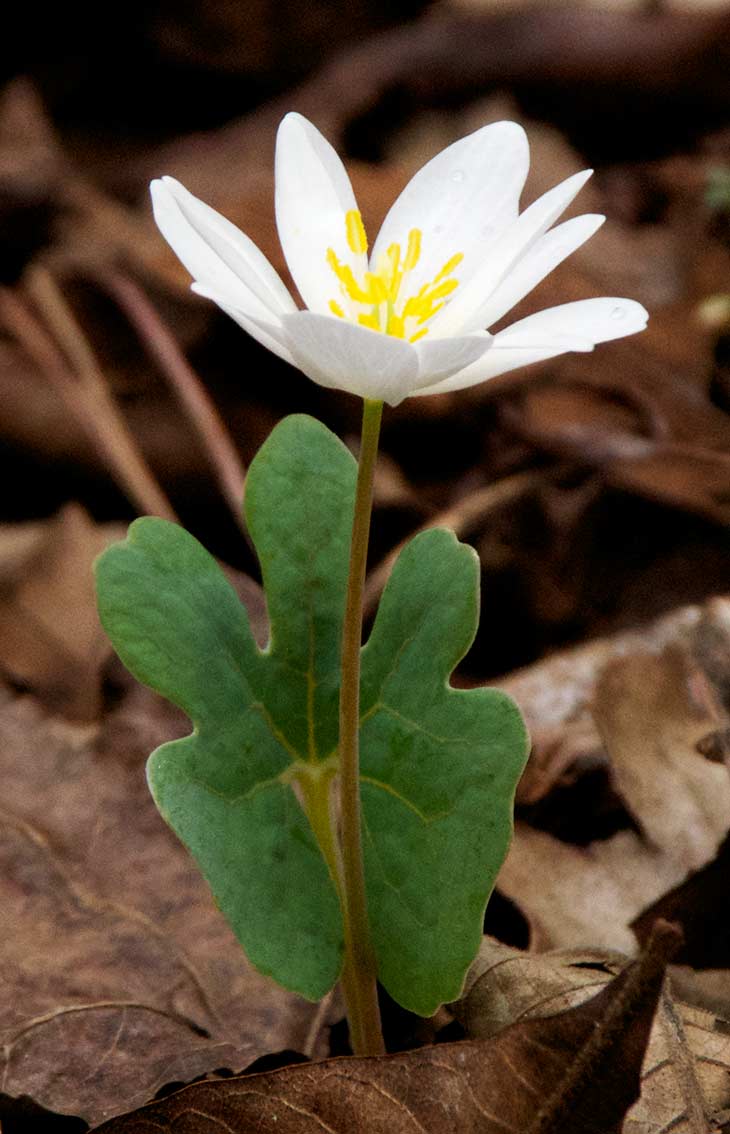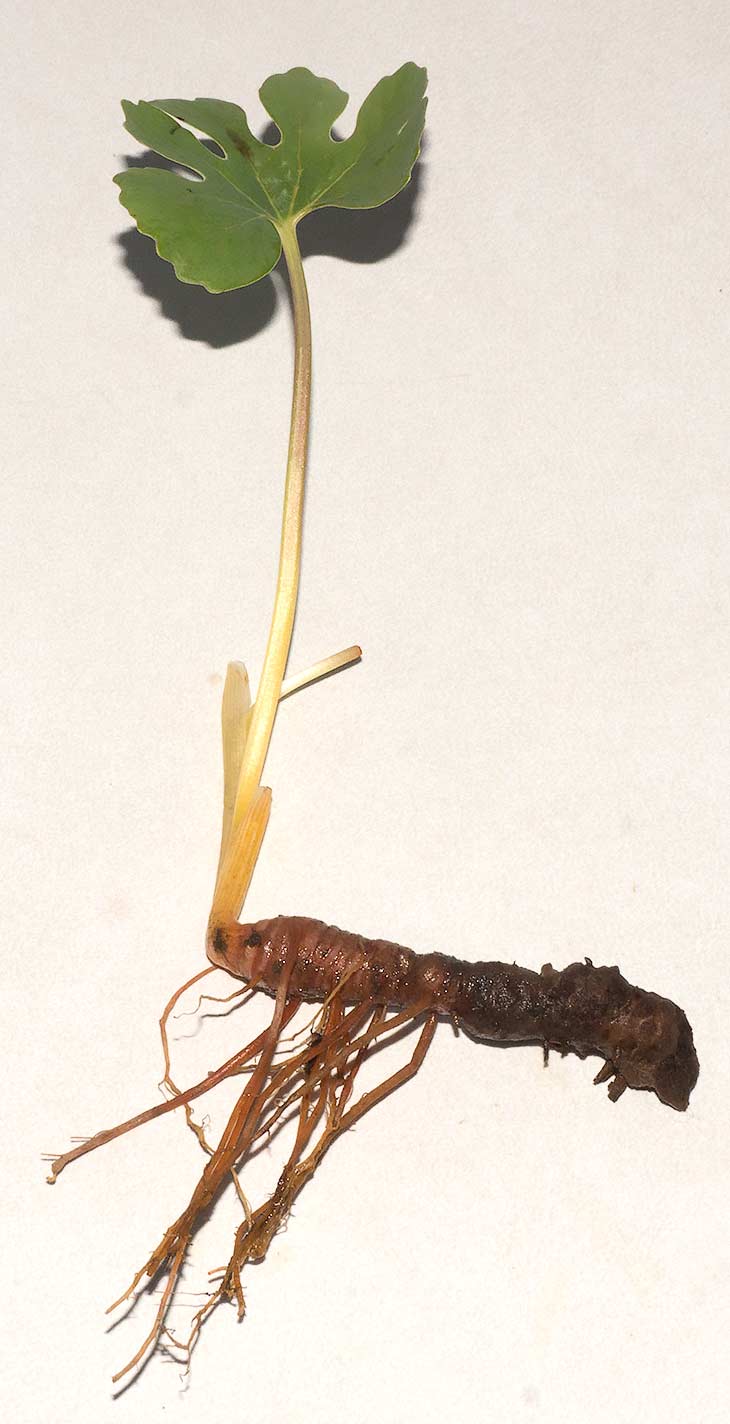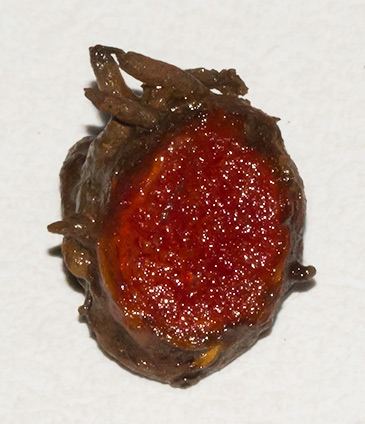Wildflowers are just beginning to appear in our woods, and Bloodroot (Sanguinaria canadensis) is one of the first. It is native to Eastern North America and is a member of the Poppy family (Papaveraceae). The plant produces a single leaf and a single flower on a petiole that stands above the leaf. Pollination is by bees or flies, and small black seeds are produced in an elongate capsule. The flower closes at night, and the petals are shed soon after pollination. The seeds have a special fleshy structure that is attractive to ants (called an elaiosome), which carry the seeds to their nests, eat the elaiosome, and then dump the seeds outside the nest where they may germinate and disperse the plants.
Bloodroot grows from a fleshy rhizome that lies just below the soil. When the rhizome is cut open a blood-red sap can be seen, thus the name Bloodroot.
Bloodroot was one of the several rootstocks that one could dig up and sell when I was a boy. The rhizome contains several alkaloids, including saguinarine. This compound is very toxic; if applied to the skin it may cause a deep lesion, so care should be taken in handling the rhizomes. Despite its dangerous properties, Bloodroot-based herbal medicines are widely available.
Double forms of Bloodroot, in which the stamens have morphed into petals, are sometimes grown as ornamentals.



